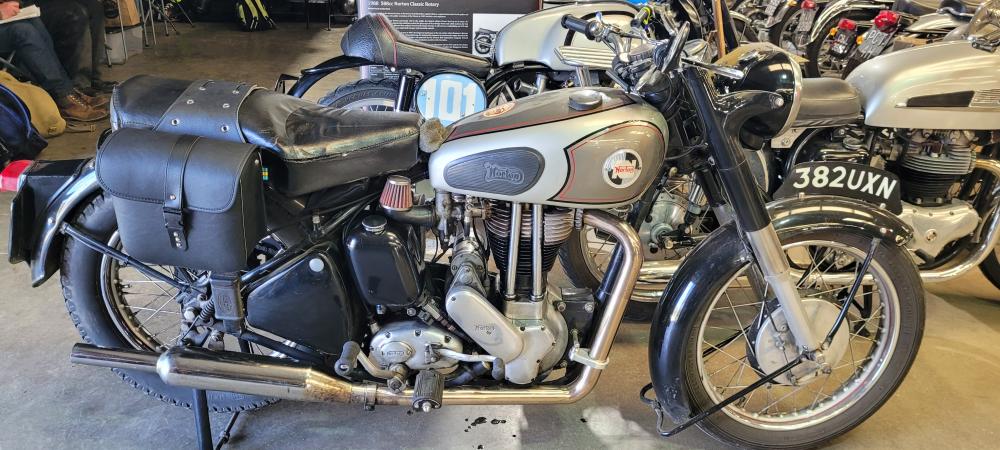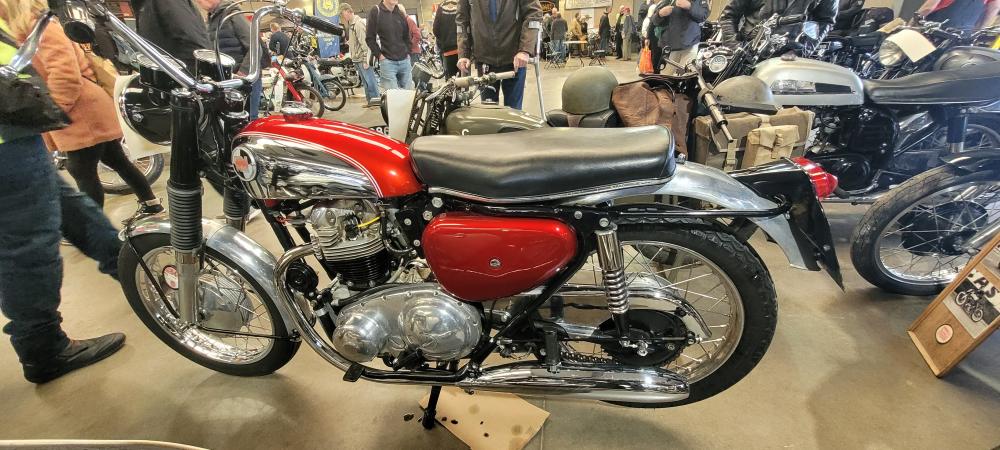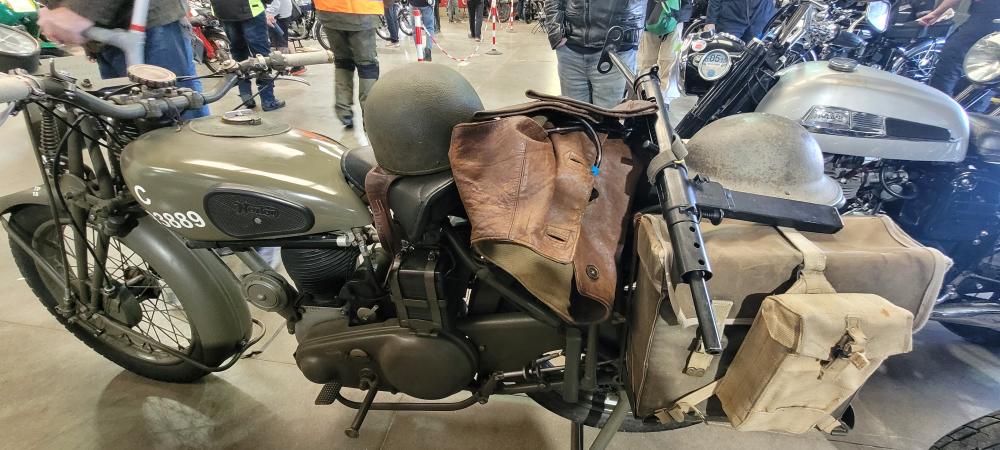A review of correspondence from NOC-L
There are alternatives to the standard Lucas ignition coils
Preventing coil breakdown
If your coils are breaking down at a certain frequency of engine vibration, make sure they aren't earthed, take them out of their clamps, and tape the bodies to stop them earthing. Apparently the coil windings vibrate, and at the correct frequency they short out to the body, especially where the body is badly damaged due to over tightening the clamps). If you find the flat spot goes when the coils are de-earthed, you'll need to replace them.
Dave Taylor (lsd.taylor2@virgin.net) on NOC-L 28th. Feb 1997
Harley coils - will they work on a Norton?
|
"Has anyone else tried a Harley coil with an electronic ignition? The Harley coil is a single 12 volt coil, it is encased in plastic, it had no markings for positive or negative. Since the coil is insulated from ground by the plastic, does it make any difference which wires go to which terminal? I went ahead and just hooking it up and got very good spark and the bike ran fine. Is there a way to determine which post is neg and which is pos? What happens if it is connected improperly?" |
I took the Boyer dual lead coil off my bike when I realized I wasn't having carburation problems but ignition malfunction. At about 4500 r.p.m. my engine would go flat at over ¾ throttle or so. It didn't always do this, but after 10,000 miles on the Boyer coil.
The Accel Harley coil is a dual lead coil. It has 2.8 ohm primary resistance. It starts on the first kick 90% of the time and pulls like a train all the way to the red line. Find out more about it at www.nettally.com/dioc/coil.html where there is also some math on power output of coils.
Now, everybody talks about the maximum resistance on coils for Boyer ignitions. Can you have too little resistance? Too much current going through the box? It isn't getting hot while I ride. It's mounted on the backbone under the seat instead of over the engine. It seems to be happy there.
Bob Patton (bpatton@humboldt1.com) on NOC-L 6th. Sep 1997
Coil requirements with Boyer ignitions
The Waldridge Motors catalogue contains an informative discussion on coil requirements with Boyer kits:-
|
"The kits for twin cylinder machines work best with a total coil resistance of between 3 & 7 ohms. If under 3 ohms too much current will be drawn through the box and it will be damaged. |
Mike Partridge of Waldridge's once told me that he'd received a fair number of returned Boyer twin lead coils - likely due to improper mounting.
Fred Mohlmann (bpatton@humboldt1.com) on NOC-L 7th. Sep 1997
Experiences of the Boyer coil
I read the instructions when I got the Boyer coil, which is the exception for me. I got the heatsink from British Marketing when I got the coil, which I mounted in turn to a 3" x 2" x ¼" aluminum plate. When I first stared running the coil I checked it for getting hot and it never got past warm. I ran it in ambient temperatures over 90o for hundreds of miles with no problem but could not find the source of the malfunction.
The technical information available on the Boyer ignition is shall we say 'scant'? There are no curves, no static, no idle, not even the basic advance range. I think the reason they do this is because for any given unit, they don't know either. 2.8 is close enough to 3 for 'they like' for me.
Bob Patton (bpatton@humboldt1.com) on NOC-L 8th. Sep 1997
Boyer coil resistance rating
In a conversation with E.J. Bransden a few years ago, he told me that he recommended at least 4 ohms on the coil.
Stan Smith (sks3rd@aol.com) on NOC-L 17th. Sep 1997
Fitting Boyer electronic ignition to Dominators
|
"Any information regarding the fitting of the Boyer ignition system to a 1968 650SS would be much appreciated" |
It depends on whether your machine is a coil and points ignition model or still has the magneto. If it is coil and points it should be a relatively simple task and you would proceed as for an early Commando, with the points housing located in the small canister in the location formerly occupied by magnetos.
If you have a magneto ignition, you will have to convert entirely to the early coil and points system used on some late P11s, Atlas and early Commandos in order to install a Boyer ignition. There is a good side and a bad side to the latter situation. The bad side is obvious, the good side is that since you don't have any of this stuff and are starting from scratch, you have a more wide open choice of components than otherwise. It means you can use some substitute ignition coils, for instance. And you don't need quite all the parts, and can dodge buying some expensive ones such as the auto advance unit and the points breaker assembly as neither are used.
While you don't really need to replace or rewire the main harness, do yourself a large favor and do a tidy job of it or hire someone experienced and competent. Stick to the original colour code by scrounging a partially toasted harness from the scrap heap at a shop; they all have them. The wiring scheme for magneto ignition Atlas, coil and points Atlas and early Commando are substantially the same, with the addition of the wires for the coils; not a big deal.
The instructions would be the same for setting up Boyer for the early style Commando as for a later one, as the function of the components is the same, however some of the places things are mounted would differ because of your chassis, so use common sense. Make sure it grounds to an unpainted frame point if they tell you to. It is only the location of the points housing that is really different between early and later Commando with points outboard on the timing cover.
Tom Davenport (tom@thekinetics.com) on NOC-L 23rd. Oct 1997
Ballast resistor bypass modification
|
"I have heard that you can bypass the ballast resistor to give the coils a blast of 12 volts on starting, and making it so that it works when the spare button on the switchgear is pushed. What are the starting difficulties this is supposed to alleviate?" |
I can't speak to this particular modification, but you're asking the right kind of question - what is this supposed to alleviate? A Commando should start readily without any 'boost'.
John. S. Morris (jsm@mediaone.net) on NOC-L 18th. Feb 1997
Ballast resistor bypass might just be useful on an 850 ES Commando
The modification seems easy enough although I'm not sure it's needed, since a reasonably tuned Commando starts with very little trouble. Cars used to use this system in the old days, and likely use a variant even today. The logic in cars was that the starter drops the voltage enough so that the spark is inadequate. Using this logic, it might be a good mod on one of the later Electric Start 850s.
Eric William Lamberts (ewl@med.unr.edu) on NOC-L 18th. Feb 1997
The ballast resistor modification is probably unnecessary
I think the ballast resistor could do this automatically. That is, being wound of a coil of wire that heats up under current, it has the characteristic that, when cold, it has less effective resistance and allows more voltage to appear across the coil primary. This state of affairs will only last perhaps a minute or so until it heats up, and if the bike in question is not running by that time it will not be showing maximum volts at the coil.
Cars have a different setup, whereby a ballast resistor is shorted out of the primary circuit when the starter is used, and comes in-circuit again immediately upon releasing starter switch. The 'works' is in this switch. There shouldn't be anything wrong with doing something similar on the Commando.
Jordan Princic (jordan@zip.com.au) on NOC-L 18th. Feb 1997
More on shorting out the ballast resistor
This is a standard feature of most cars and bikes with electric starts. The idea is based on the fact that the battery voltage drops while the electric start is being cranked. Using a handlebar button to feed battery voltage directly to the coils (i.e.: bypassing the ballast resistor) is an attempt to circumvent the voltage drop/loss to the ignition system while cranking, and maintain a hot spark.
However, you should know that the Mk.lll includes this feature already ... there is a feed from the starter solenoid to the coils ... it is a white/purple lead. Further, if you have a Boyer, the ballast resistor gets trashed anyway.
On a standard kick start Commando, the modification won't do any harm, but as John Morris suggests, if your coils are good, I can't imagine what benefit you could get. There is nothing that happens when starting with a kickstarter that is different than during normal running conditions.
Greg Kricorissian (grkricor@ccs.carleton.ca) on NOC-L 19th. Feb 1997
Inductive coil problems
My after-market coil (Accel) went dead-short. I was able to secure a pair of 12 volt coils and hooked these up to the Boyer output ( Boyer----Coil 1----(jumper)----Coil 2 ). The bike started right up, and seemed to work fine except for missing at high speed and on heavy roll-on of throttle at low speed. I mucked about with this for what seemed like ages and then finally hit on the real problem.
The primary field in Coil 1 was collapsing and drawing current from Coil 2, resulting in a weak spark from Coil 2. Splitting the Boyer output and making the connection to each coil using a 'Y' instead of the jumper helped a lot, and although it's still not perfect, but at least serviceable.
I've tried a few other approaches (large PNP power transistor-amp circuits to drive each coil independent from the single Boyer output but the moral is - don't parallel wire coils.
Forrest D. Whitcher (fw@world.std.com) on NOC-L 8th. May 1998
Ballast resistors
If I've read the above correctly, this is the source of the problem: 12 volt coils, were used and wired directly in parallel. This would definitely cause the sorts of problems observed. Some people also inadvertently use 12 volt coils in series and have similar symptoms. Boyer suggest wiring the ignition coils in series, and using a pair of 6 volt units, (which are standard on the Commando, since the stock points ignition uses a ballast resistor).
The wiring loom that comes with a Boyer is a little confusing, since it includes a jumper wire. This jumper is supposed to go from the positive terminal of the 'upper' coil to the negative terminal of the 'lower' coil in the series pair. With a Lucas RITA ignition, when you wire 12 volt coils in parallel (such as on a Triumph twin), Lucas specify using an isolation diode in series with each coil primary lead.
Greg Kricorissian (grkricor@ccs.carleton.ca) on NOC-L 9th. May 1998
Andrews coils
|
"I'd like to beef up my electrical system on my Commando. I've installed the Lucas Rita E-ignition and I'm looking at a catalogue promoting these high output (30kV) Andrews coils Part No. 332-12/A. Any experience?" |
I have a high output dual lead 12 volt Andrews coil on my 1973 850 and also have the Boyer. It starts starts first kick, actually idles perfectly with my old Amals and it puts out a noticeably brighter spark.
? (j5724@aol.com) on NOC-L 23rd. Feb 1998
|
© Norton Owners Club 1997-98 |
© Norton Owners Club 2002 |








